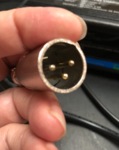Ravi Kempaiah
Well-Known Member
- Region
- Canada
- City
- Halifax
This thread is dedicated for helping new E-bike owners to understand and maintain their batteries in the best possible way.
There is a lot of confusion for any new E-bike owner as to how one should treat their batteries: Shop owners may say one thing, online resources may another thing, someone else says charge after every ride, dont worry! and few others say charge to 80%. It is painful to see so much misinformation floating around. So, you may ask why should I trust this information anymore than some random internet article. Nope, you don't have to trust me. The thread will have information that is thoroughly vetted by the scientific community and is widely accepted, not my personal opinion.
If it adds any credibility, I have been an E-biker for over 6 years and have had various level of exposure into this. I am also pursuing my doctoral work on Li-ion batteries at the University of Illinois.
For those who are interested in understanding the whole EV battery cycle and general overview of certain best practices, they may find this video useful. We received very positive feedback from the EV community.
The thread will have only vetted, scientifically verified data on how to treat your battery. Feel free to add your thoughts and questions that might enhance one's understanding on the topic, feel free to subscribe but please refrain from posting unrelated stuff.
There is a lot of confusion for any new E-bike owner as to how one should treat their batteries: Shop owners may say one thing, online resources may another thing, someone else says charge after every ride, dont worry! and few others say charge to 80%. It is painful to see so much misinformation floating around. So, you may ask why should I trust this information anymore than some random internet article. Nope, you don't have to trust me. The thread will have information that is thoroughly vetted by the scientific community and is widely accepted, not my personal opinion.
- I just got a new E-bike, how should I treat my battery?
Awesome! Your eBike comes with a battery charger and give it a good look and make sure it is the right one.
A 36V bike should have a charger that goes upto 42V or
a 48V bike should have a charger that goes upto 54V.
Most ebikes are shipped with batteries at 50% charge. Before your first ride, your shop should have charged it to 100%. If you bought it online, plug in your charger and charge it all the way. Once the charger reaches the 100% mark, it should turn green from red.
- What is the best practice for charging an E-bike battery?
On your E-bike manual or your dealer who may not have the scientific background, may say, top it off after each ride. Yes and no. If you don't care about the longevity of the battery, just charge it after each ride, the high voltage cutoff (HVC) in the battery management system (BMS) shuts it off after it reaches 100% ( 42V for a 36V battery system or 54.5V for a 48V battery system). This practice may provide roughly 400-500 cycles before there is a substantial degradation in the cell chemistry. You simply don't have the mental bandwidth or interest in managing your battery and you are happy to replace the battery after 2 years, then you don't have to read any further.
But, Li-ion batteries have infiltrated our lives (laptops, phones, tablets, cars). So, it can be good to know a bit more. Have you ever wondered why cellphone batteries or laptop batteries die quickly within a year or so. Plugging it in overnight is def one of the primary causes. Read on..
What should I do?
Charge your battery when it is not too cold or too hot. Let's say you just came back from a 50 mile ride and the battery is pretty warm ( you may not be able to feel it by touching the plastic case, but it does get warm). Leave it for 30 mins so it is back to the room temperature. Ideally, charge your batteries such that it does not sit fully charged for hours. So, if your morning commute starts at 7.30am, either charge your battery to 80% the night before or that early morning.
You can double the cycle life of your battery by charging it only to 80%. Here is a neat infographic from Grin Tech in Canada, one of the innovators in the space.
They even developed a smart charger for this purpose called "Cycle Satiator". Check this out: http://www.ebikes.ca/product-info/cycle-satiator.html
I don't have a Cycle Satiator nor do I want to invest in one!
That's perfectly fine. You can just use the charger that came with your bike (most generic 2A chargers are made by Modiary or Shenzhen in China). Try to the keep the state of charge (SOC) between 20% to 80% if possible and enjoy your bike.
There are other cheaper options out there that do a similar job.
36V charger ----- 48V charger ---- 52V charger.
If you are interested in maximizing battery life, be mindful of these two parameters:
High temperature = BAD for Li-ion cells. So what is high temperature? Anything above 40'C or 105'F (trunk of a car on a hot summer day or exposing battery direct sunlight in Arizona or running your eBike on full turbo or throttle. One can run his E-bike on full turbo if the cell chemistry is tuned for that (Samsung 30Q vs 35E).
Time (days or weeks) spent at high voltage = BAD for Li-ion cells. You charged it 100% and you're going away for a long weekend. This may not be a good idea.
Everyone in the electric vehicle space knows who Elon Musk is, so I am attaching a pic of his response to this question.
- How to store your E-bike battery?
It is best to store your battery at room temperature (cool, less humid conditions) and at 50% charge. If that's not possible, just avoid storing at 100%. I am attaching a scientific article on how calendar life ageing and conditions affect the degradation. Basically, What they are saying is degradation is minimal in the 30%-70% zone.
"
"The storage initial SOC level is also one of the admitted factors of battery ageing during its calendar life. According to these studies [32,43], a high SOC level (>70%), or a low one (<30%), engenders a huge potential disequilibrium on the electrode/electrolyte interface and this accelerates chemical reactions. All through this experiment, the battery was under extreme SOC (>90% or <10%) quite often during each use session. However, most of storages happened during the fifth session (Table 3), and the SOC level is here considered at a critical low level (Fig. 7). This observation can also explain the ageing results of the fifth session.
The paper is attached below [Predicting battery degradation in EV's].
- What are some of the things that can damage an E-bike (Li-ion) battery?
What causes Li-ion cells to die?
https://electrek.co/2018/05/04/are-you-killing-your-lithium-batteries/ (the comments section has some interesting responses).
Time spent at high charge ~100% charge is bad i.e., if you leave your charger plugged in overnight, expect ~500 cycles instead of 800+ cycles. It's perfectly ok to charge your battery to 100% but keeping the batteries at 100% for days may not be a good idea.
A fantastic video by Prof. Jeff Dahn replete with scientific insights regarding battery degradation is here. Prof Dahn is world's foremost expert when it comes to Li-ion batteries. He invented the NMC chemistry and is the current Canada research chair heading Tesla's exclusive battery research program with a university.
- What kind of charger should I use?
If possible, use chargers that charge at less than 8A (most chargers run at 2A or 4A, which are perfectly fine).
As long as you charge your batteries at 0.5C or less, it is better.
Now, what is C-rating?
C stands for the name of the great scientist, Charles Coulomb and Coulomb is also an international SI unit for electrical charge.
If you charge your battery completely in 1 hour or discharge completely in an hour, that is 1C charge-rate.
As long as it takes more than 2 hrs to charge your battery from 0 to 100%, you're fine.
Tesla can be charged to 80% in 40 minutes but the car has very complex thermal management systems for battery, power control unit and engine. Since E-bike batteries do not have such cooling, it is better to charge them at < 0.5C. If you charge at rates below 0.25C, there may not be significant advantages compared to 0.25C.
So, if your battery is 14Ah in capacity, a charger that charges at 2A to 5A is perfectly fine.
If it adds any credibility, I have been an E-biker for over 6 years and have had various level of exposure into this. I am also pursuing my doctoral work on Li-ion batteries at the University of Illinois.
For those who are interested in understanding the whole EV battery cycle and general overview of certain best practices, they may find this video useful. We received very positive feedback from the EV community.
The thread will have only vetted, scientifically verified data on how to treat your battery. Feel free to add your thoughts and questions that might enhance one's understanding on the topic, feel free to subscribe but please refrain from posting unrelated stuff.
Attachments
Last edited:






